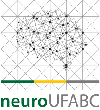Banca de QUALIFICAÇÃO: RAÍSSA BENOCCI THIBES
Uma banca de QUALIFICAÇÃO de MESTRADO foi cadastrada pelo programa.DISCENTE : RAÍSSA BENOCCI THIBES
DATA : 27/10/2020
HORA: 14:00
LOCAL: Remoto
TÍTULO:
Analysis of Invasive Electrical Records of the Insula in patients with neuropathic pain due to brachial plexus injury and post-herpes zoster
PÁGINAS: 65
GRANDE ÁREA: Ciências da Saúde
ÁREA: Medicina
RESUMO:
The insula is a subdivided structure both with respect to cell distribution, and with respect to its function and anatomical connectivity. One of these functions is related to the sensory and discriminatory pain issue, with the postero-superior (or posterior dorsal) portion being the most involved, such that patients with chronic pain are likely to have altered activity. In fact, neuroimaging studies have pointed in this direction and experiments with TMS (transcrineal magnetic stimulation) have shown possibilities for modulating the activity of the postero-superior insula (PSI) to somehow improve the patients' pain condition. Since neuromodulation by TMS has shown positive results, therapy with DBS (Deep Brain Stimulation) is considered, which requires neurosurgery for the implantation of the electrode. In addition to being a procedure that can be aided by protocols of electrophysiological biomarkers (by micro-register and macro-register), the introduction of the DBS electrode allows to know locally the electrical activity of PSI, and even its surroundings. Therefore, this work aims to analyze the intraoperative records in order to obtain, in frequency, the spontaneous activity of PSI at rest. For that, data from Local Field Potential (LFP - in the present context, also called macro-record) of 7 patients with chronic pain, obtained through the DBS electrode, at rest, were analyzed. The analyzes were of Spectral Power Density (PSD) through the Welch Method with hamming window, compared with Welch Method with rectangular window and MultiTapper Method. This comparison was intended to confirm peaks by different spectral estimation techniques. Since the PSD brings the average of the activity in frequency, to observe the electrical behavior dynamically, the LFP Spectrogram was also calculated. In fact, looking at the PSD estimates, the most prominent components appear to be of low frequencies, peaking at about 1 to 2 Hz, and as the smallest ("secondary") peaks, between 12 and 13 Hz, and some patients showed something at about 17Hz. Only one patient showed a component at about 7Hz. In the future, we intend to analyze the LFP data of sensory stimulation (temperature and touch, mainly) and, as the Spikes records were obtained, perform Spike Sorting by K-clusters, which also allows us to obtain the frequency of firing.
MEMBROS DA BANCA:
Presidente - Interno ao Programa - 1653406 - ABRAHAO FONTES BAPTISTA
Membro Titular - Examinador(a) Externo ao Programa - 2418537 - DANIEL BOARI COELHO
Membro Titular - Examinador(a) Externo à Instituição - FABIO LUIZ FRANCESCHI GODINHO
Membro Suplente - Examinador(a) Interno ao Programa - 1955999 - ANDRE MASCIOLI CRAVO
Membro Suplente - Examinador(a) Externo ao Programa - 1946319 - DIOGO COUTINHO SORIANO
Membro Suplente - Examinador(a) Externo à Instituição - LUIS FERNANDO HINDI BASILE - UMSP




